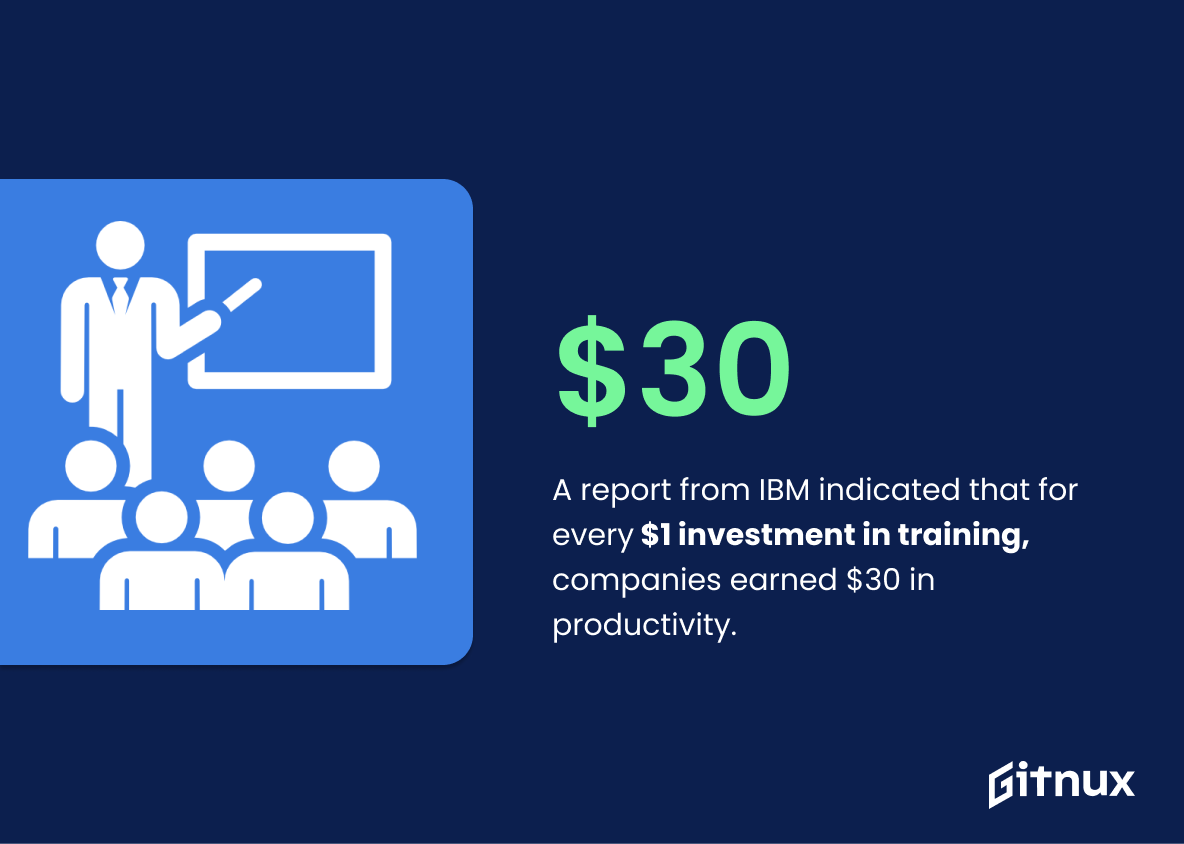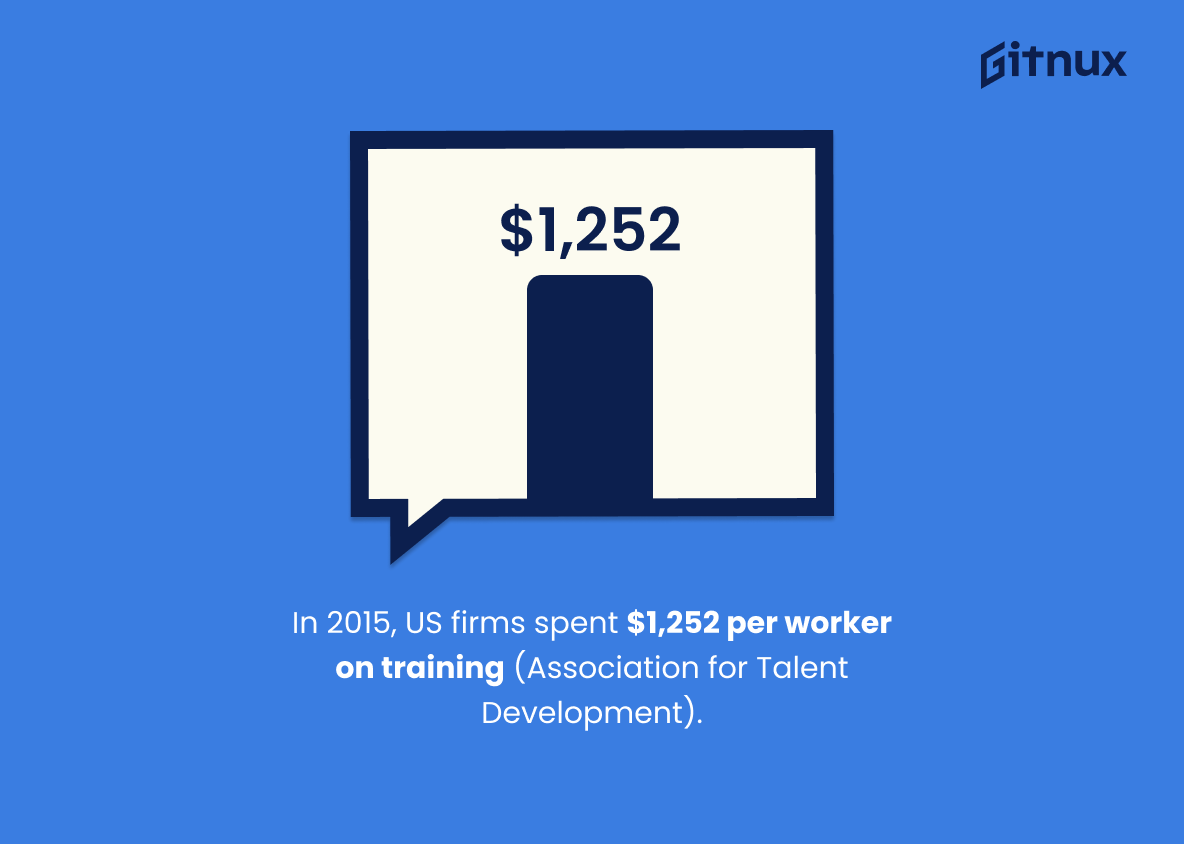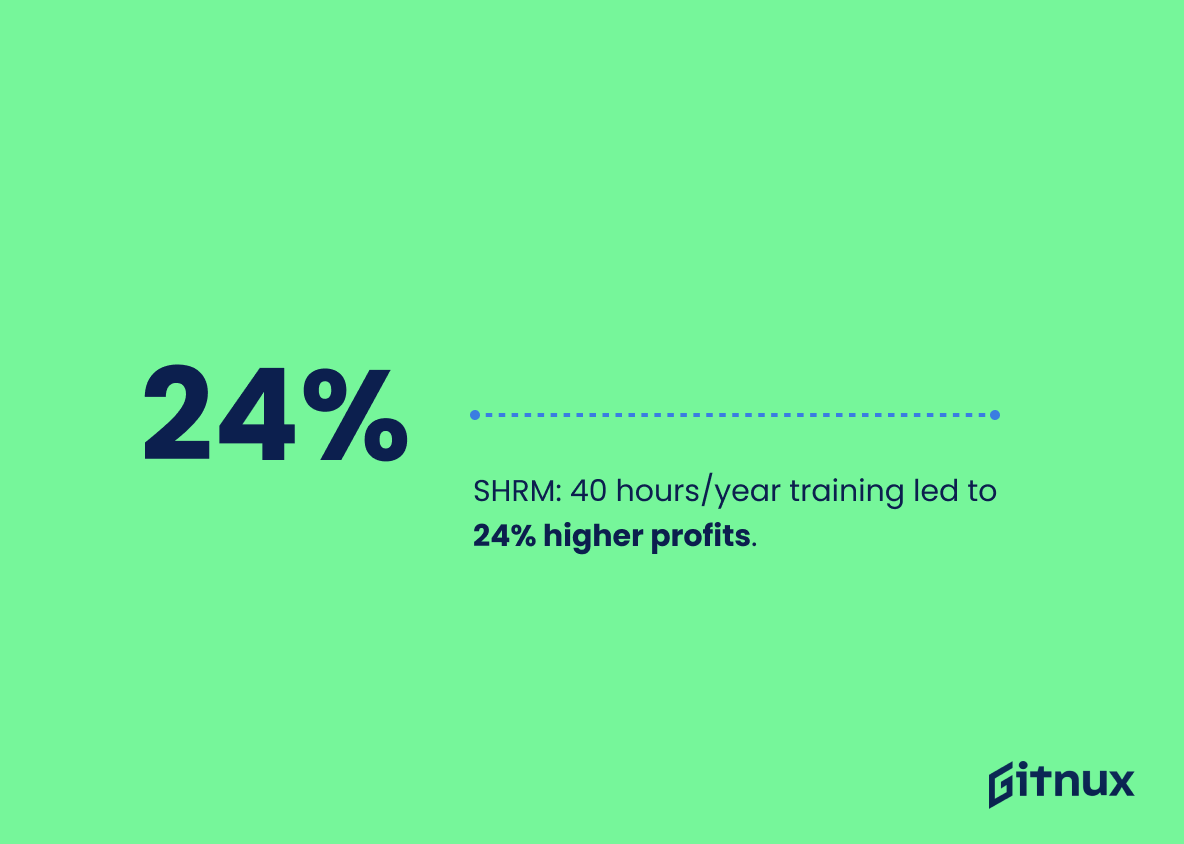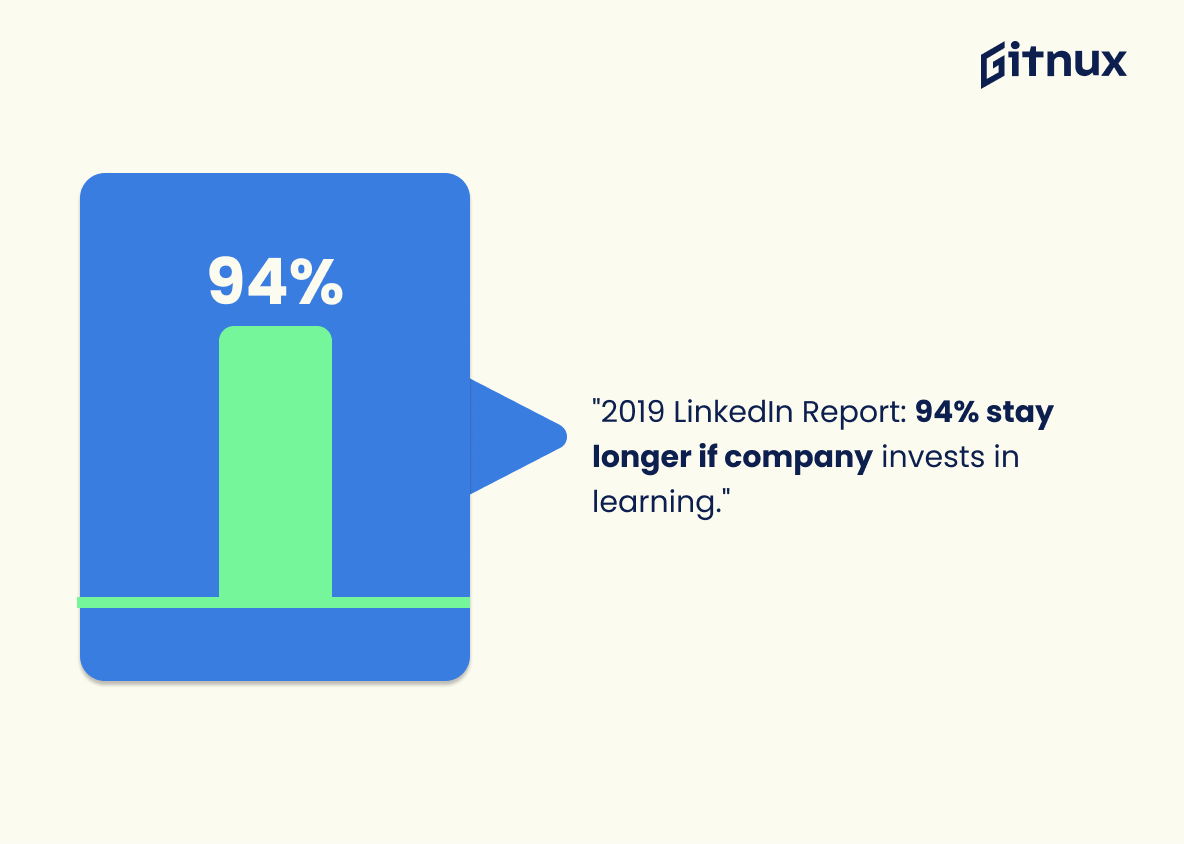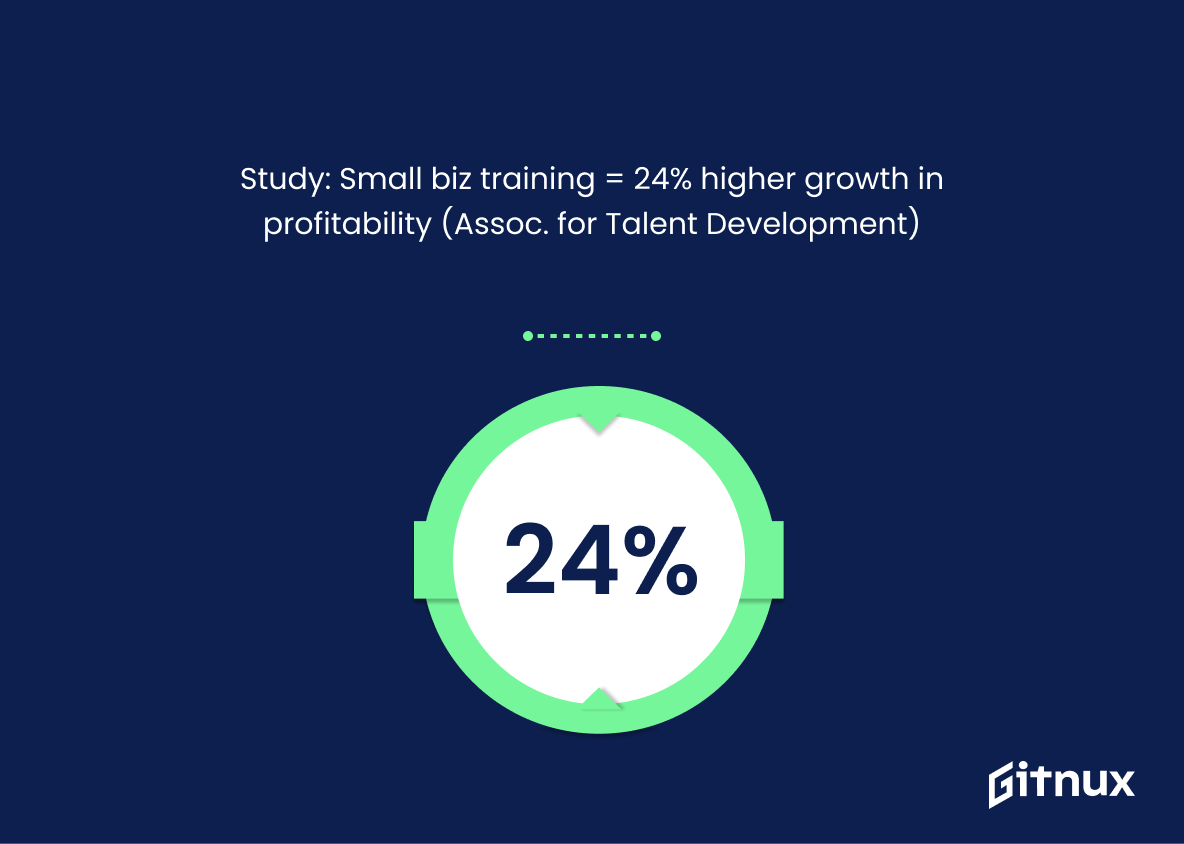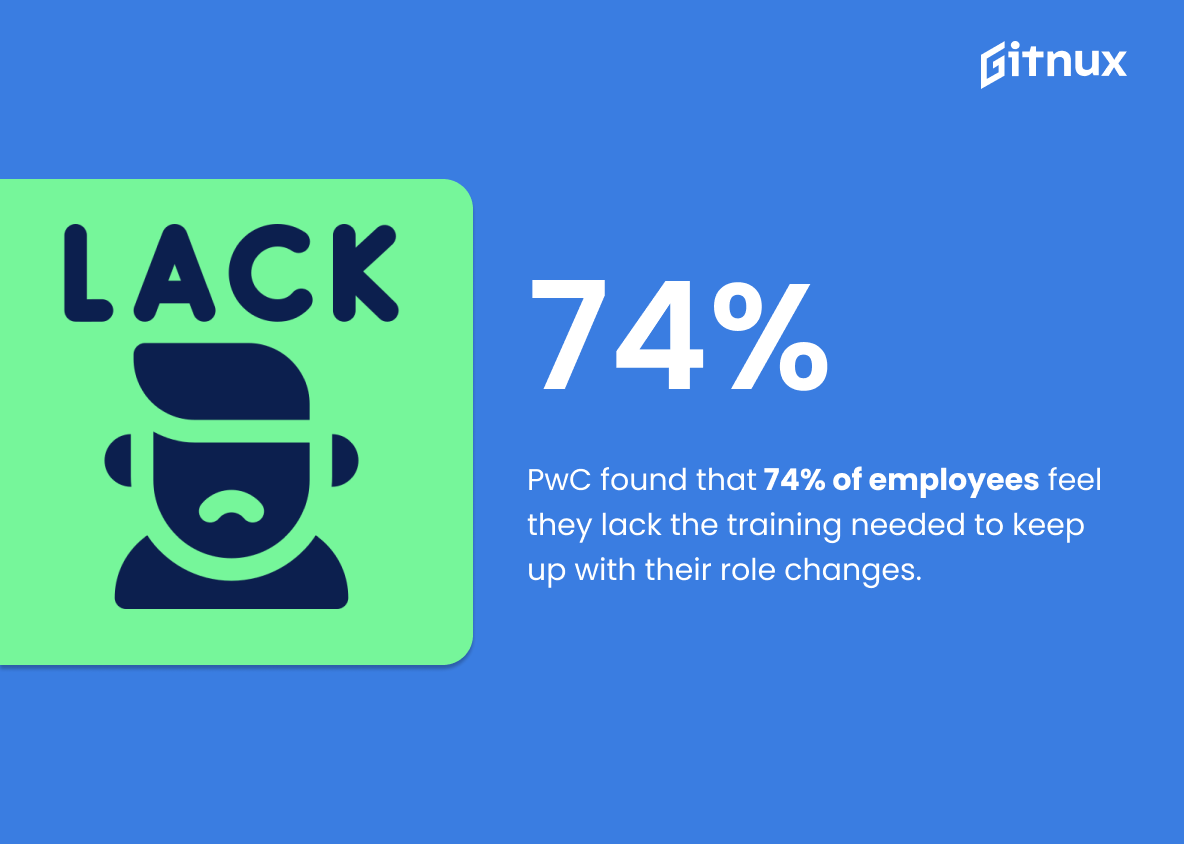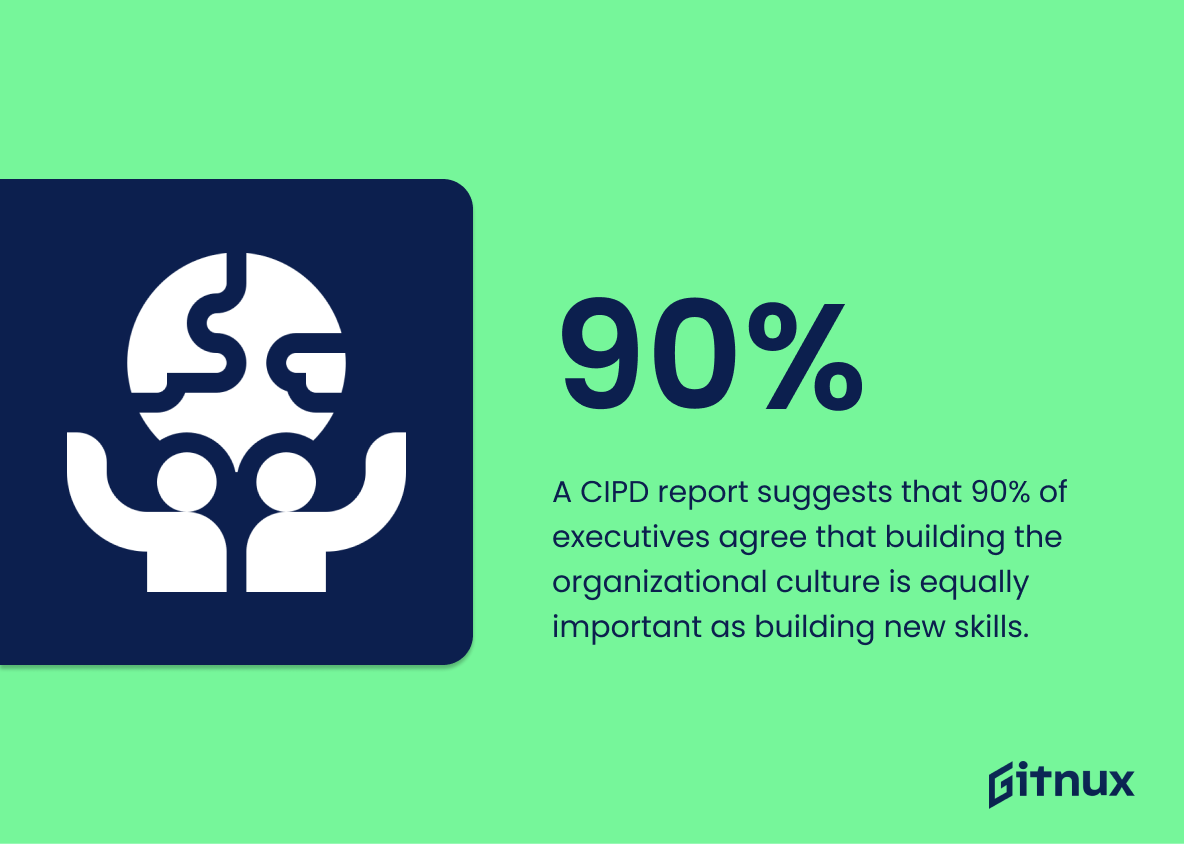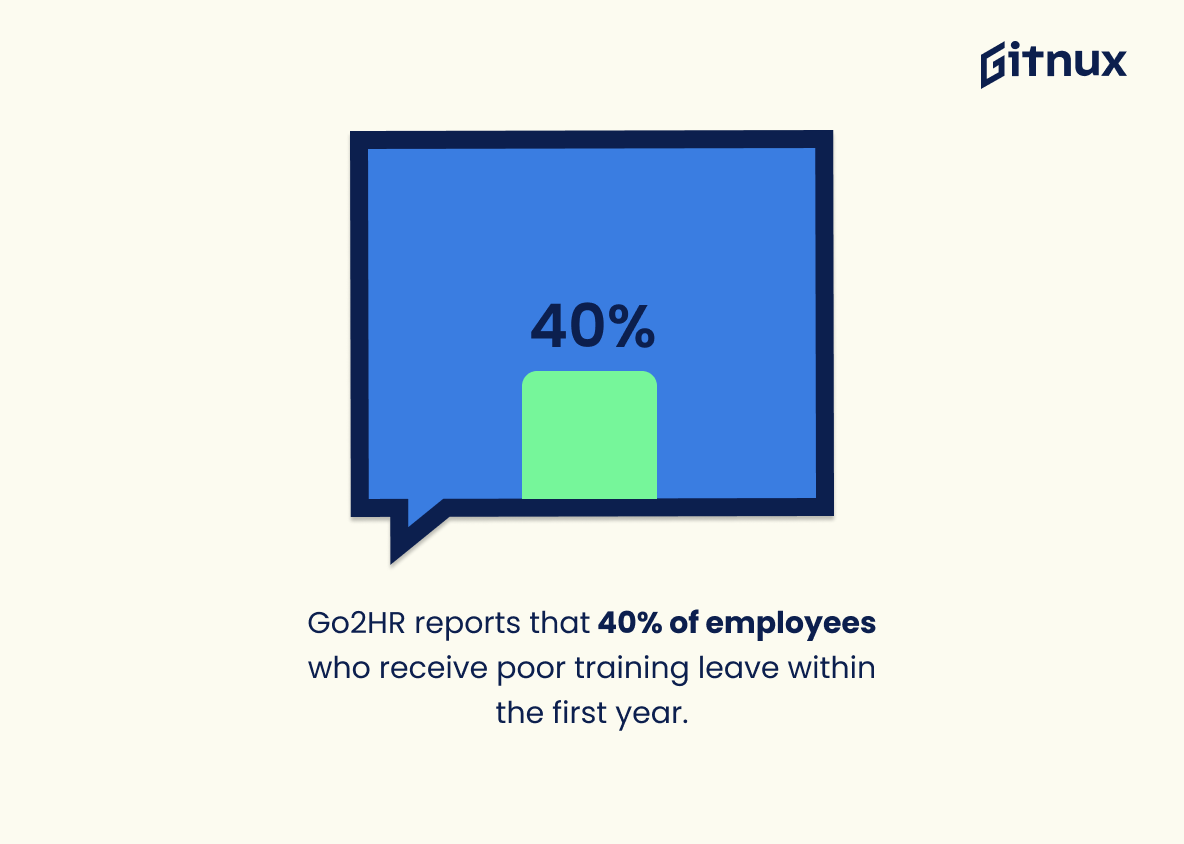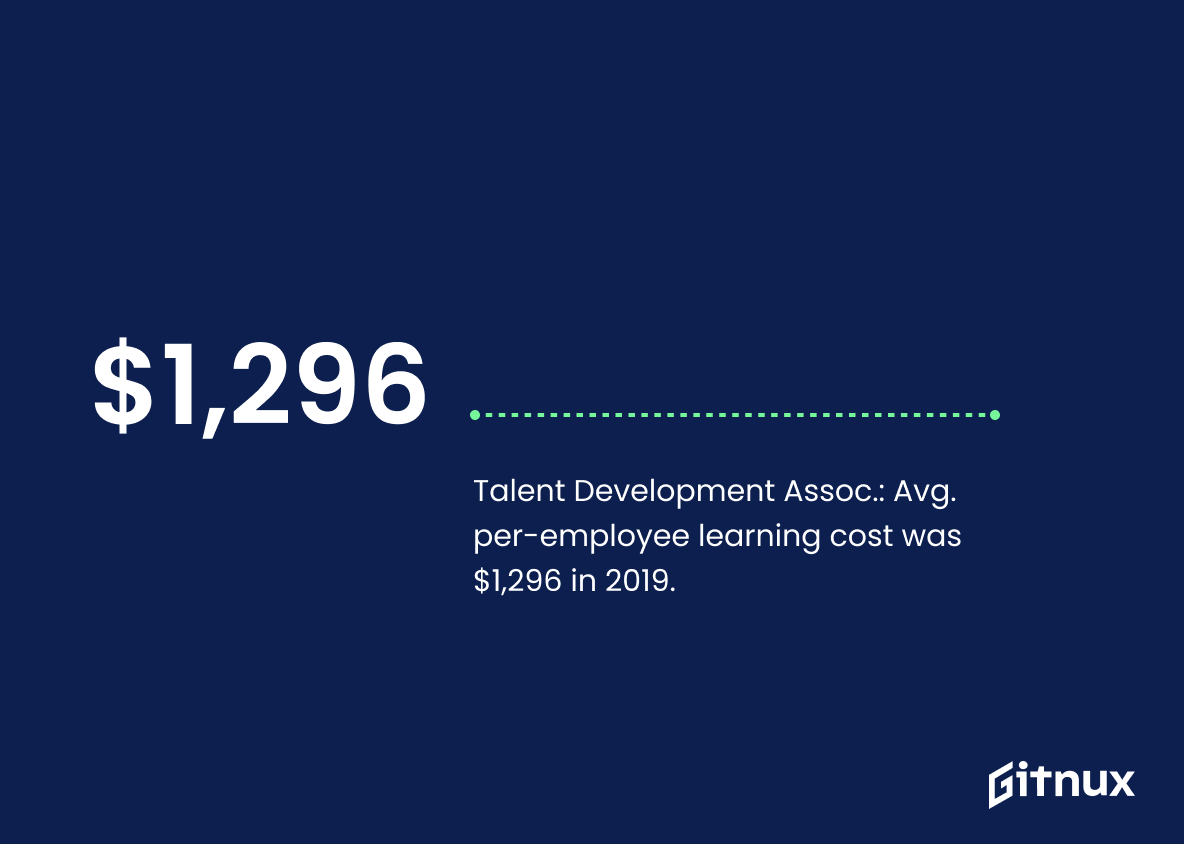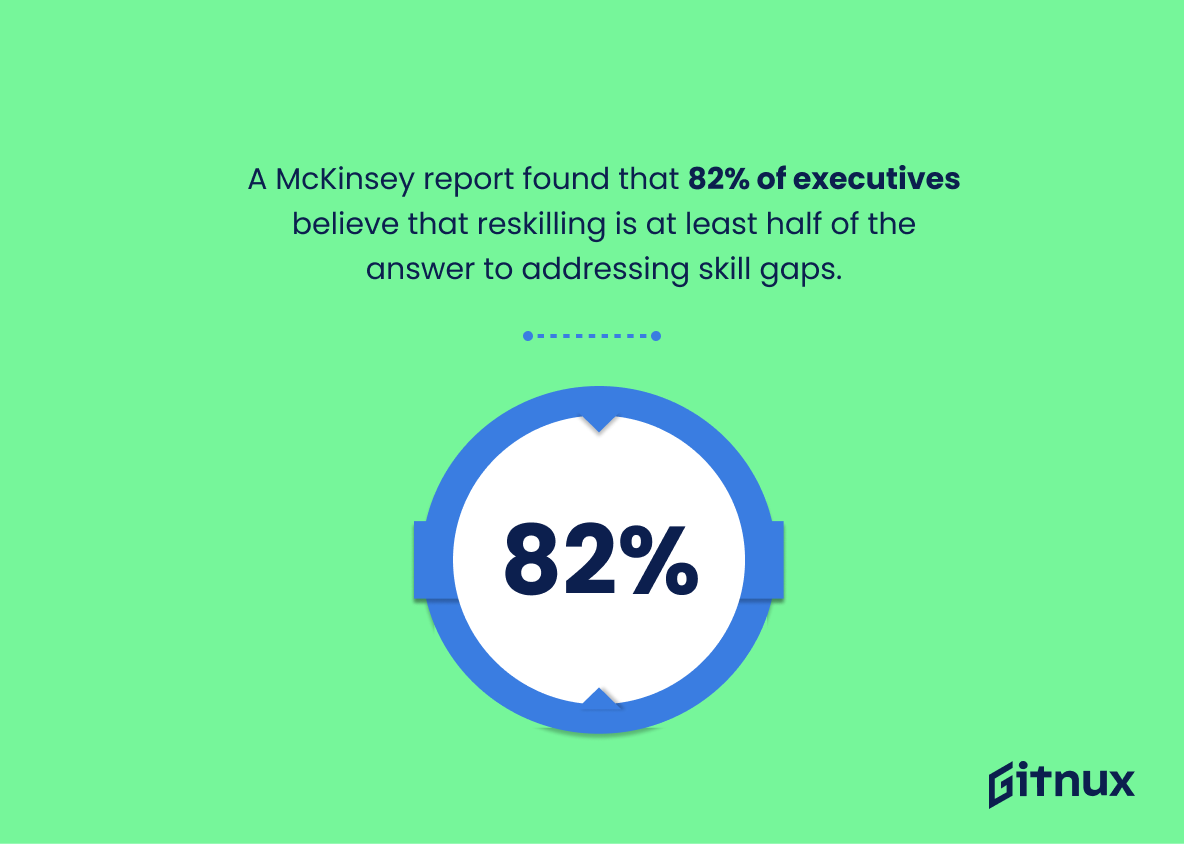In today’s dynamic corporate landscape, the importance of employee training cannot be overstated. However, are businesses actually seizing this necessity and investing in their workforce’s skills development? Let’s delve deeper into this discussion by examining the most recent and relevant employee training statistics. These figures offer insightful perspectives about the trends, gaps, and future directions in corporate learning and development. Understanding them can help businesses shape their strategies and foster a more engaging, productive, and effective work environment. Read on as we dissect, analyze, and interpret these statistics to provide you with the information you need for strategic decision-making.
The Latest Employee Training Statistics Unveiled
A report from IBM indicated that for every $1 investment in training, companies earned $30 in productivity.
Harnessing the power of this striking statistic, we can visualize the astonishing return on investment that emerges as a result of investing in employee training. This number – a thirtyfold return – signifies a tremendous boost to productivity, offering compelling evidence for the corporate world that investing in the enhancement of skills and knowledge of employees isn’t just about ticking off the corporate responsibility box, but it’s a powerhouse propelling the productivity engine. In narrating the story of employee training statistics within a blog post, introducing such a fact not only underlines the profitability of such ventures, but also stirs potential discussions around the incredible, yet often overlooked economic benefits of employee development.
According to the Association for Talent Development, US companies spent an average of $1,252 per employee on training and development initiatives in 2015.
In the realm of Employee Training Statistics, the aforementioned 2015 data from the Association for Talent Development offers a revealing snapshot of the significant investment US organizations are making in their human capital. It highlights a clear financial commitment to enhancing employee skills, thereby elevating productivity levels and driving organizational success. This fact not only demonstrates that training is being taken seriously, but it also underscores the value companies place on developing in-house talent, thus setting a benchmark for comparable businesses to follow.
The Society for Human Resources Management (SHRM) reports that companies offering 40 hours of training per year per employee experienced 24% greater profit margins.
Reflecting on the enlightening revelation by the Society for Human Resources Management (SHRM), it becomes crystal clear that investing in employees truly translates into tangible business success. The statistic undeniably illustrates the corporate windfall that can be obtained from dedicating 40 hours of training per year for each employee – a fascinating 24% surge in profit margins.
This striking correlation puts a spotlight on the significant role of continuous learning in business profit augmentation. It also underlines the vital importance of fostering a work environment committed to skill enhancement. Thus, investing in comprehensive employee training is clearly not an expenditure, but in fact a potential catalyst for impressive profit growth. Any astute business looking to drive growth, increase efficiency, and optimize profitability should therefore put the principle encapsulated within this statistic into considerable practice.
Much like the ripple effect of a pebble thrown in a tranquil lake, the small act of dedicating training hours to employees can set off far-reaching positive impacts on a company’s profit landscape. It is a compelling testament that employee training isn’t merely an obligation or a necessity, but also a growth mechanism that could help businesses outshine the competition in the corporate race.
In 2019, LinkedIn’s Workplace Learning Report found 94% of employees would stay in a company longer if it invested in their learning and development.
Presenting a deep dive into the statistical realm, the LinkedIn’s Workplace Learning Report unearths a compelling narrative for organizations on a keen lookout for superior employee retention strategies. With an astounding 94% of employees expressing a desire to prolong their association with a company willing to invest in their learning and development, this statistic paints a powerful picture in the landscape of Employee Training. It embodies the changing dynamics of workforce expectations, underscoring the direct correlation between ongoing learning opportunities and employee loyalty. Thus, this number isn’t just a statistic; it’s a pivot around which astute companies can architect their staff development policies, transforming employee training from a corporate obligation into a strategic retention tool.
Small businesses which invested in training were 24% more likely to experience growth in profitability compared to those that didn’t according to a study from Association for Talent Development.
Highlighting this valuable insight, the statistic skillfully weaves a compelling narrative on the undeniable correlation between workforce training and profitability in small businesses. In the grand tableau of employee training statistics, it emerges as a persuasive argument for those seeking credible, research-backed reasons to invest in skill development of their teams. From the perspective of small businesses, often operating with tight budgets, this concrete evidence underscores that training is not merely an expenditure, but rather an investment that can yield remarkable growth in profitability. Therefore, this statistic can trigger a paradigm shift in approach towards employee training, championing it as a key growth catalyst rather than a discretionary cost.
PwC found that 74% of employees feel they lack the training needed to keep up with their role changes.
In the landscape of a blog post on Employee Training Statistics, such a statistic serves as a glaring beacon, illuminating the stark reality of our current employment environment. PwC’s finding that an overwhelming 74% of employees feel they are treading water without proper support due to insufficient training resonates with the overarching sentiment in the business sphere. It underscores the pressing need for increased investment in skill and talent development for employees adapting to evolving job roles, painting a clear picture of why businesses should prioritize employee training as a catalyst for the growth of their most valuable resource – human capital.
The Brandon Hall Group Study highlighted that organizations with effective employee training programs have a 218% higher revenue per employee compared to organizations without formalized training.
In the vivid tapestry of Employee Training Statistics, the Brandon Hall Group Study acts as a subtly powerful thread, skillfully illustrating the undeniable financial impact of successful training programs. Unveiling an astonishing 218% leap in revenue per employee for organizations that emphasize effective employee training, it pierces through the heart of conventional wisdom, asserting that training isn’t merely a necessity, but a growth catalyst. This fact offers more than just numbers, it shines as a beacon for organizations, nudging them towards investing in employee training and development – not as a chore, but as a strategic move to propel their earnings upwards. It emphasizes a simple yet potent truth. Employees are not price tags, they are investments, and investing in their growth pays long-term dividends. So, let this astounding 218% serve as a clockwork orange; bitter in the face of the training efforts it demands, but invitingly sweet in the bounty it promises.
According to the Corporate Learning Factbook 2018, it was found spending on learning and development increased by 12% last year.
Underscoring the growing importance of employee training, the Corporate Learning Factbook 2018 brings to light an invigorating trend: spending on learning and development surged by 12% last year. Organizations are evidently awakening to the undeniable link between investing in their people and achieving long-term success. This data point illuminates how companies are pulling out all the stops to equip their workforce with the necessary skills to thrive in a rapidly developing professional landscape. This dynamic shift in spending patterns signals a profound reimagining of corporate culture, where continuous learning and development is no longer seen as a luxury, but a strategic necessity for competitive advantage.
As per Training Magazine, large companies on average dedicate 34.4 hours of training per year per employee.
Digesting the juicy morsel of data from Training Magazine, we uncover an intriguing narrative about the commitment large companies devote to nurturing their workforce. On average, a generous helping of 34.4 hours per employee per year is set aside exclusively for training. This bit of information paints a vivid picture of the emphasis large corporations place on continuous skill development and learning enhancement – a testament to their hunger for excellence. It does more than just set a benchmark for the volume of training; it also underscores a potent strategy for talent retention, productivity improvement, and competitiveness in today’s cut-throat business landscape. This potent insight, hence, holds a vibrant spot in anything that discusses Employee Training Statistics.
According to the Association for Talent Development, the high-performance organizations provide on average, 73 hours of training per year per employee.
Reflecting upon the enlightening statistic from the Association for Talent Development, it becomes evident that high-performance organizations significantly value the aspect of employee training, dedicating an impressive 73 hours annually per employee on average. This data nugget serves as a key ingredient in painting a comprehensive picture about how integrating continuous learning into corporate culture can potentially uplift business performance. Through weaving this fact into our blog post on Employee Training Statistics, it enhances our narrative by showcasing the concrete correlation between investment in employee development and the cultivation of a high-achieving organization. Hence, the fact is not just a number but a testament to the power of training in shaping organizational success.
A CIPD report suggests that 90% of executives agree that building the organizational culture is equally important as building new skills.
Illuminating the facets of executive thinking, a compelling CIPD report uncovers that a staggering 90% of top-notch decision-makers affirm the equal importance of cultivating an organization’s culture along with skill development. This novel insight found its spot in our post dedicated to Employee Training Statistics owing to its profound implications on the current perceptions of training. Not only does it amplify the real potential of an embracing company culture, it also underpins its significance on par with new skill sets employees bring onboard. As organizations draft their blueprint for employee development, the statistic adds a pivotal piece to the puzzle – a culture conducive of growth and learning. It pinpoints towards a balance of technical skill proficiency and a resonant organizational culture in propelling company performance forward.
Go2HR reports that 40% of employees who receive poor training leave within the first year.
In the realm of Employee Training Statistics, the striking revelation by Go2HR that 40% of workers bid adieu within the year if poorly trained, serves as a pulsating alert for companies. This statistic highlights a sharp double-edged sword. On one hand, it underscores the prowess of effective training as a key tool to retain talent. On the flip side, it throws light on the tribulations of weak training, where it bears the potential to hemorrhage valuable human resources. Consequently, businesses should reflect on this thought-provoking figure to not only optimize their training modules, but also to curtail the exodus of employees, thereby fortifying their workforce stability.
The Association for Talent Development’s State of the Industry report found that the average direct learning expenditure per employee was $1,296 in 2019.
Highlighted in the Association for Talent Development’s State of Industry report, the striking figure of $1,296 as the average direct learning expenditure per employee in 2019 sheds light on the considerable value companies place on nurturing their workforce. Its relevance to a blog post about Employee Training Statistics is two-fold. First, it offers a measurable representation of the financial commitment businesses are willing make towards enhancing their employees’ capabilities, thus emphasizing the critical importance of training programs. Secondly, it acts as a crucial benchmark for firms seeking to invest in employee training, providing a panoramic view of industry standards and trends. Weaving this statistic into the discussion not only enriches the narrative, but also serves as a compelling reminder of the significant investments made in the name of employee training and development.
Business Training Experts found that well-trained employees are 57% more engaged and 37% more productive.
Delving into the realm of Employee Training Statistics, one uncovers a significant gem. Business Training Experts uncovered a striking correlation; well-trained employees outshine their counterparts, boasting an engagement rate 57% higher and a productivity surge of 37%. This thought-provoking revelation demonstrates the potency of employee training, emphasising its importance—not just for the individual’s skillset—but for the overall company landscape. Harnessing the transformative power of training propels employees beyond mere participation, spurring them into a state of high engagement. Moreover, it’s like igniting a domino chain of productivity; once one domino (or in this case, employee) starts, the rest follow in a cascade of elevated performance. Therefore, investing in high-quality training programs can catalyze a virtuous cycle of enhanced engagement and productivity, ultimately leading to organizational success. Consider this statistic the linchpin in our understanding of the profound influence of training on workforce effectiveness and company growth.
A McKinsey report found that 82% of executives believe that reskilling is at least half of the answer to addressing skill gaps.
Peeking through the eye of the McKinsey report reveals a compelling sentiment shared by a considerable bulk of executives—82%, to be precise, asserting reskilling to be a major remedy for skill gaps. Such a hefty stance adds a unique flavor to the discussion about employee training statistics, highlighting the underlying significance of continuous learning in today’s fluid workforce. It underscores that employees need no longer be seen as tangible assets with fixed skills, but as dynamic beings, prepared to evolve with ever-changing global business trends and technologies. Within our blog post narrative, this fact not only enhances the conversation but also unveils the importance leadership places on reskilling as a tool, thus emphasizing the need for solid employee training programs.
According to the Training Industry report, in 2017, US companies invested $90.6 billion in employee learning and development programs.
The staggering figure of $90.6 billion invested by US companies in employee learning and development programs as indicated in the 2017 Training Industry report, forms a cornerstone of the narrative about Employee Training Statistics. Its colossal magnitude underscores the commitment of corporate America towards honing their workforce skills and expertise. This sizable investment signifies the potential that businesses see in fortifying their human resources, further illuminating the significance of continuous learning and development in today’s dynamic business environment. Thus, this benchmark number serves as a critical reference point for anyone wanting to understand the trends in employee training initiatives.
The Human Capital Benchmarking Report found that businesses with fewer than 1000 employees train an average of 41.7 hours per employee, per year.
Framing the importance of the Human Capital Benchmarking Report’s finding, it cleverly spotlights an underappreciated aspect of corporate culture that could be a game-changer in the sphere of employee development. It underscores the compelling point that businesses with less than 1000 employees allocate an average of 41.7 training hours per year for each of their employees. This nugget uncovers a potential correlation between the size of an organization and the energy invested in upgrading employee skills, thus setting a substantial precedent in the discussion about Employee Training Statistics. Furthermore, this information even subtly challenges larger enterprises, urging them to question – Are they investing sufficiently in the learning and growth of their workforce? So, the potency of this statistic transcends mere numbers, instead, it serves as a mirror reflecting on the training priorities of smaller vs larger companies.
Learning and development professionals estimated that 27% of their workforce was able to access virtual training anywhere, anytime, according to ON24’s Webinar Benchmark Report.
The intriguing revelation from ON24’s report that 27% of employees can access virtual training anytime, anywhere, weaves a captivating narrative regarding employee training strategies. It strikes not just as a numerical fact, but as a call to embrace the cosmic shift towards a digitalized work environment. This nugget of investment in virtual training signifies a pivotal transformation in the corporate landscape, where training transcends geographical boundaries and time zones. It heralds a future where professional development can thrive unhindered by physical limitations. In the context of our blog post about Employee Training Statistics, this insight creates a compelling argument, unraveling the new age dynamics of professional learning and development.
Soft skills training, like leadership development, was the top priority for talent development in 2019, according to the LinkedIn Learning 2019 Workplace Learning Report.
Unearthing insights from LinkedIn Learning’s 2019 Workplace Learning Report, it illustrates a compelling shift in the corporate landscape. In the past, technical skills often held the focal point in talent development strategies. However, the spotlight in 2019 was devoted to the cultivation of soft skills – most notably, leadership development. This pivot is particularly relevant in the realm of employee training, echoing an evolving appreciation for the imperative role that soft skills play in fostering a collaborative, dynamic, and adaptable workforce. By prioritizing the development of these competencies, businesses acknowledge that high-performing teams necessitate more than just trade-specific acumen; they require adept leaders, capable of both guiding and inspiring.
An Accenture report indicated that while 80% of executives see the need for skill retraining, only 46% are willing to invest in training employees.
Peeling back the layers of this intriguing Accenture report, we uncover a striking contradiction in executive perspectives on employee training. It paints a vivid picture: a substantial majority (80%) acknowledges the crucial need for skill retraining, yet less than half (46%) are ready to put their money where their mouth is and invest in training. Within the tapestry of a blog post about Employee Training Statistics, this statistic serves as a key thread, shedding light on the existing gap between understanding the importance of continuous learning in today’s dynamic work environment and actually implementing it. It highlights a significant disconnect, which could potentially hinder productivity, innovation, and overall business success. This dialectic flawlessly underscores the critical essence of not only noting the importance of employee training, but also making a firm, financial commitment to it.
Conclusion
In conclusion, the relevance of employee training cannot be overstated in today’s highly competitive business environment. Employee training statistics compellingly attest to the positive impacts and substantial returns of investing in workforce development. Companies that prioritize continuous learning are more likely to retain top talent, boost productivity, and ultimately drive profitability. Regardless of the industry, making education and training accessible for employees has proven to be a successful strategy. So it’s indeed high time businesses realized that cultivating a culture of learning isn’t just an option anymore, but a necessity to stay ahead of the curve. Let these statistics guide your way to a more productive, engaged, and successful workforce.
References
0. – https://www.www.go2hr.ca
1. – https://www.www.accenture.com
2. – https://www.learning.linkedin.com
3. – https://www.www.mckinsey.com
4. – https://www.www.pwc.com
5. – https://www.businesstrainingexperts.com
6. – https://www.www.shrm.org
7. – https://www.www.td.org
8. – https://www.trainingmag.com
9. – https://www.www2.deloitte.com
10. – https://www.s3.amazonaws.com
11. – https://www.www.on24.com
12. – https://www.www.brandonhall.com
13. – https://www.jbdev.com
14. – https://www.www.cipd.co.uk
